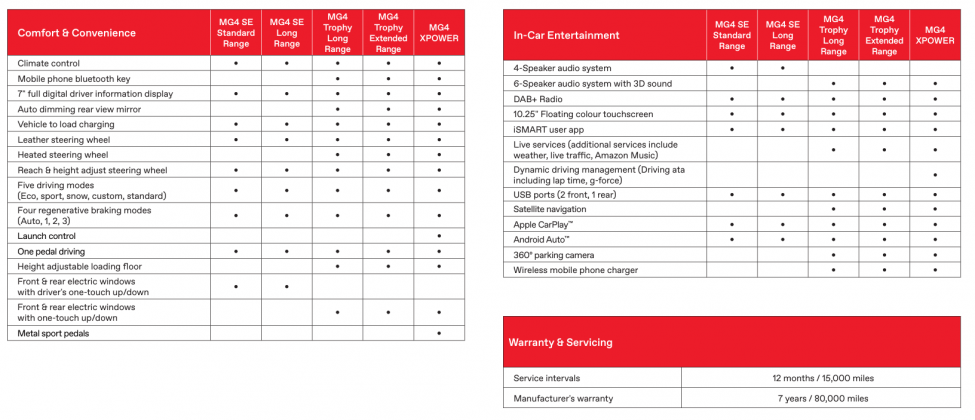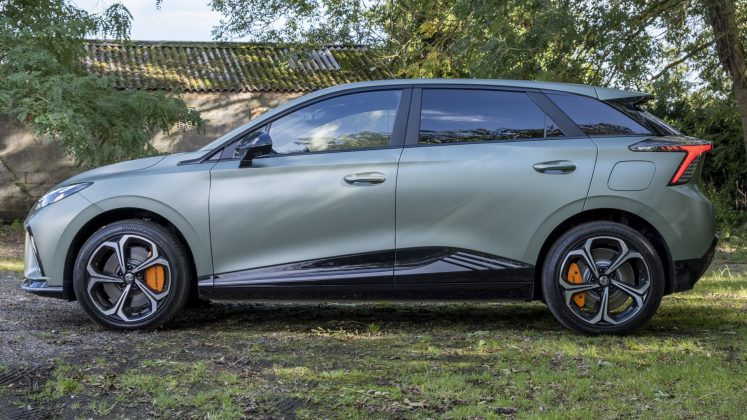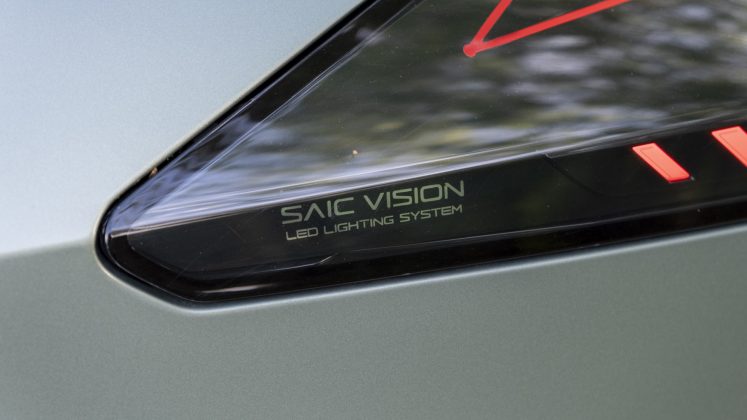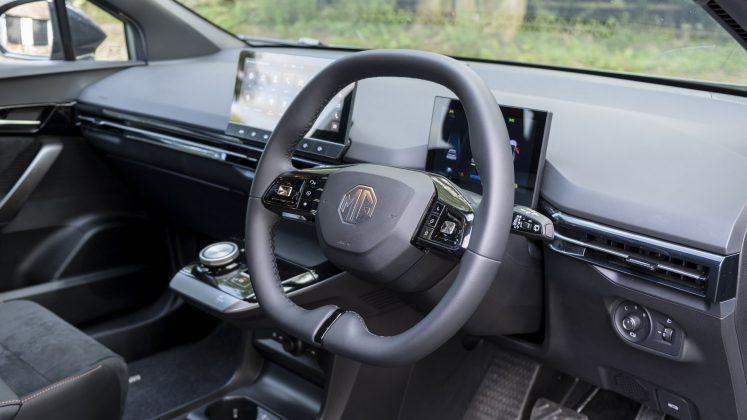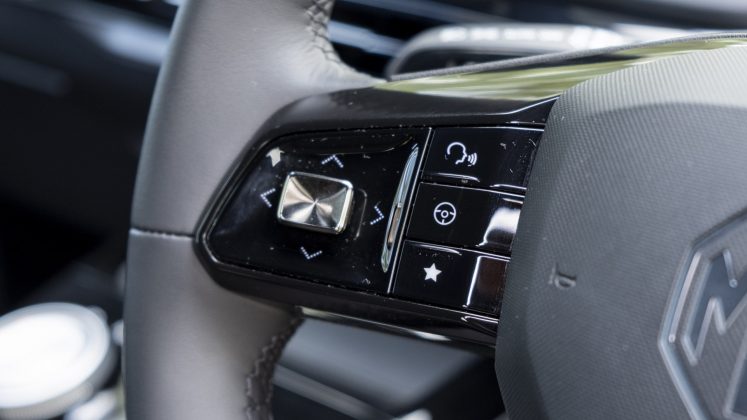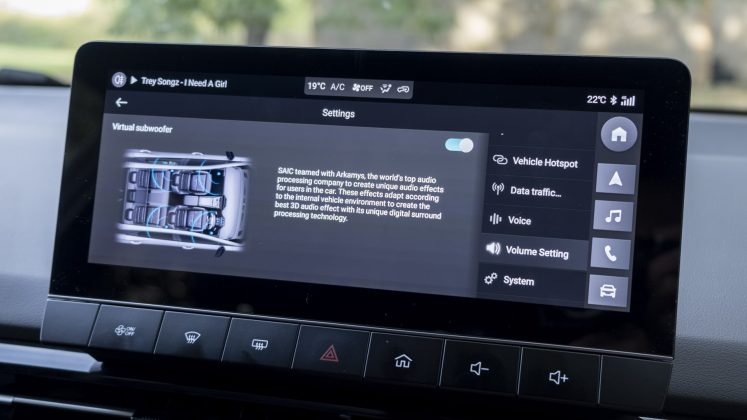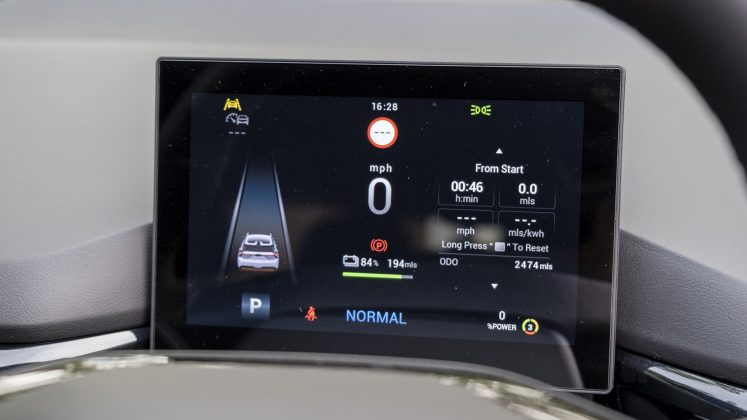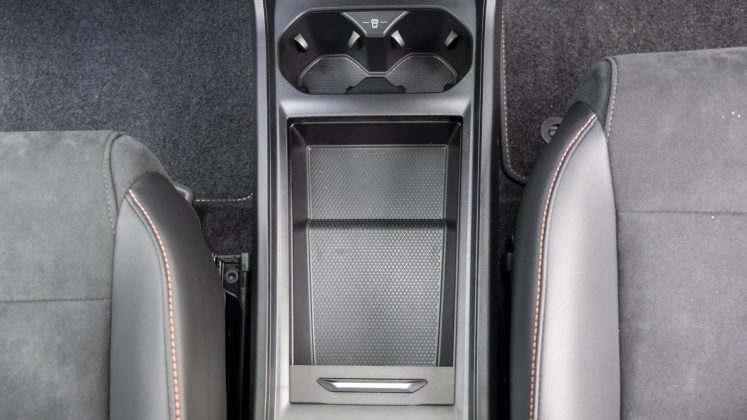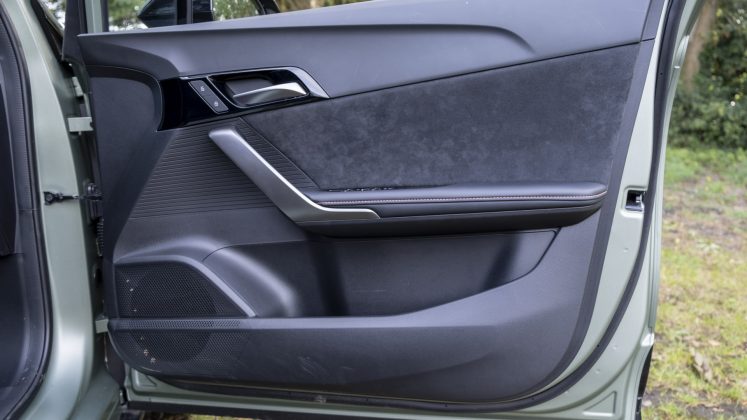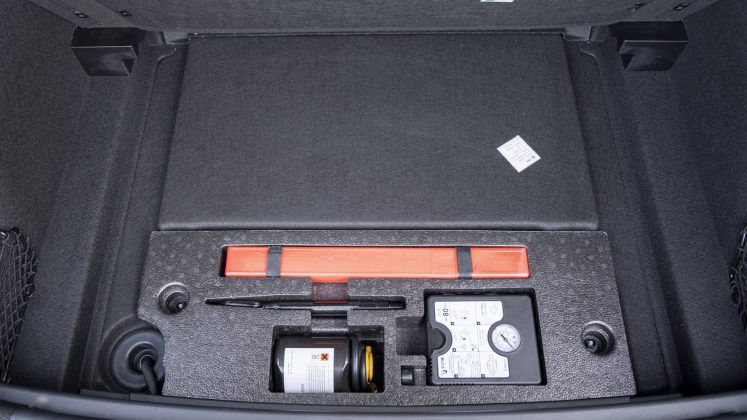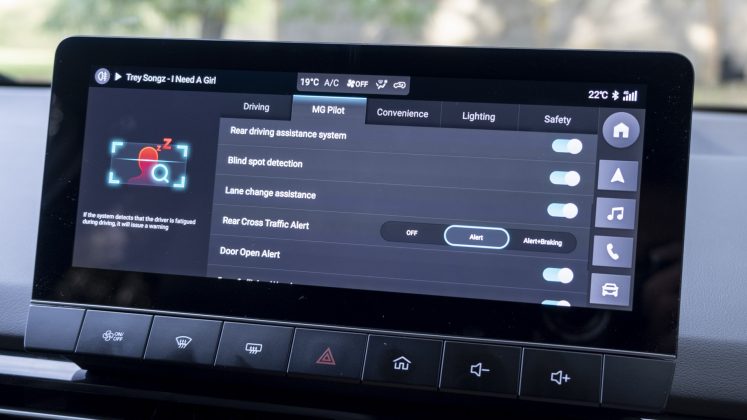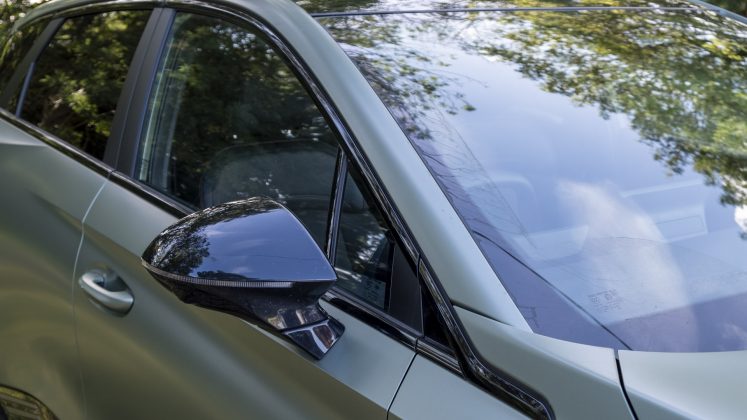The MG MG4 EV XPower is a supped-up version of the regular MG4 EV. It ups the ante from a rear-wheel drive model that outputs 150 kW (201hp) of power and 250 Nm of torque, to an all-wheel drive configuration with a staggering 320 kW (429hp) of power and a whopping 600 Nm of torque.
If you’d prefer to watch a review of the MG4 EV XPower, head on over to our YouTube channel.
MG4 EV XPower price & competition
Despite the significant increase in power, the MG4 EV XPower is still surprisingly affordable at £36,495. While the entry-level MG4 EV starts from £26,995, the more comparable SE Long Range starts from £29,495, while the Trophy Long Range costs £32,495, and the Trophy Extended Range comes in at £36,495.
A detailed breakdown of the trim levels can be found, below (click to expand):
In terms of the alternatives, there are a few hatchbacks and saloons to consider: the BMW i4 from £49,995; the Hyundai Ioniq 6 from £47,040; the Polestar 2 from £44,950; the Tesla Model 3 from £42,990; the Honda e from £37,395; the VW ID.3 from £37,115; the Cupra Born from £36,475; the Smart #1 from £35,950; the Vauxhall Corsa-e from £33,930; the GWM Ora Funky Cat from £31,995; the Peugeot e-208 from £31,345; the Mini Electric from £31,000; the Renault Zoe from £29,995; the Nissan Leaf from £28,995; and the Fiat 500 Electric from £28,195.
You might also want to consider some of the more compact all-electric SUVs such as: the Hyundai Kona Electric from £32,450; the Kia Soul EV from £32,845; the Citroen e-C4 from £35,795; the Kia Niro EV ‘2 64’ from £37,295; the Vauxhall Mokka-e from £38,635; and you’ve also got the MG5 EV, an all-electric estate that starts from £30,995.
Read next: New MG ZS EV review: Still the best budget electric SUV?
MG4 EV XPower exterior review
From the exterior, the XPower is near-identical to the regular MG4 EV, which is already very stylish with its aggressive design. However, you will notice a few grey accents at the front, side and rear, and that the car sitting a little lower than its less-powerful sibling. There are also oversized orange brake calliper covers, which are somewhat of a gimmick, as they are a lot smaller than what the manufacturer is trying to portray.
18” alloys come fitted as standard, while the ‘Arctic White’ and ‘Holborn Blue’ colours are your free colour options. ‘Black Pearl’ and ‘Camden Grey’ cost £545, while ‘Dynamic Red’ and ‘Volcano Orange’ will set you back £695. The pictured ‘Racing Green’ finish, bespoke to the XPower, costs £800, a worthwhile option for its unique look.
Much like the regular MG4 EV, the XPower has a maximum towing weight of 500kg for braked and unbraked trailers, which is quite a bit lower than its rivals. There is also no roof load capacity, thus one cannot attach a roof box for additional storage space.
Read next: Cupra Born review: Better than the VW ID.3?
MG4 EV XPower interior review
Inside, the MG is still pretty stylish. It reminds us of a myriad of different vehicles: the steering wheel is hexagonally shaped like the Peugeot e-208, the centre console has an overhanging design similar to that of the older-generation Kia e-Niro, while the 7″ instrument cluster is positioned behind the steering wheel like the VW ID.3 and Cupra Born.
Where it differs from its cheaper sibling is with the choice of materials used within the cabin. It’s superior with the use of black Alcantara upholstery that gives it a sportier look. The vehicle’s interior is also pretty practical. Physical buttons reside under the 10.25″ infotainment system and on the steering wheel, while the rotary gear dial and electric parking brake sit conveniently on the overarching island.
However, physical climate controls go amiss, which seems to be a nonsensical trend among automakers. While one can quickly access the temperature and fan controls via the programmable button on the right-hand side of the steering wheel, and turn on or off the climate system by pressing a button located underneath the infotainment system, we still would have preferred physical buttons and knobs. Granted, many of its competitors also opt for onscreen controls but unlike the rest, the infotainment system is a bit slow to respond; MG has tried to address it in later firmware updates, but it’s still not up to scratch with its rivals.
As for the infotainment system itself, it supports Android Auto and Apple CarPlay over a wired connection. The USB Type-A port found below the overarching centre island is used to connect up to the system, while the Type-C port provides charge, and permits USB audio and video playback.
On the subject of audio, there are six speakers with 3D sound processing done by audio specialists, Arkamys. The system is pretty punchy, especially with the addition of the virtual subwoofer. To hear how it performs, watch our detailed review of the regular MG4 EV on YouTube.
As for the 7″ driver’s display, it’s vivid and displays all the key information that one might need. However, it’s not customisable nor does it integrate navigation data from the aforementioned mobile operating systems. Thankfully, the built-in navigation system does feed turn-based information to the instrument cluster. One can also use the MG iSmart app to check the status of the vehicle and even locate it via the built-in tracker. Elsewhere, there’s no Head-Up Display (HUD) available as an option, which is a feature that is present in rival offerings.
Read next: Hyundai Ioniq 6 review: Better Than Tesla, BMW & Polestar?
MG4 EV XPower storage review
Shifting our attention to storage, the MG4 EV XPower has an ample amount of room at the front of the cabin: the door bins are large enough to accommodate a 500ml bottle and a few valuables, the glove compartment is handy to take a few documents, two cupholders, the centre console area is large and has a retractable cover to hide valuables from prying eyes, above it by the overarching gear selector there is a non-slip area that doubles up as a wireless smartphone charger (albeit not well thought out, as if you put your foot down to the metal it will send your phone flying), as for the centre armrest compartment it can accommodate a small-sized purse or wallet, and there’s even a retractable compartment towards the headliner for your sunglasses.
However, the same couldn’t be said at the rear of the cabin, as there are no cupholders, a missing pulldown armrest and limited storage towards the rear portion of the centre console and the door bins. Still, there are a few small compartments within the rear segment of the front seats, which can be useful to transport smartphones, books or a power bank.
As for its boot, it’s a little small in comparison to its rivals, but it should suffice for your weekly shops; with the seats up there’s 363 litres and with them folded, there’s 1,165 litres. Near identical to the regular MG4 EV. Here’s how it stacks up to its rivals: BMW i4 (470/1,290 litres); Nissan Leaf (435/1,161 litres); Tesla Model 3 (425/1,235 litres); Hyundai Ioniq 6 (401/1,100-1,300 litres); VW ID.3/Cupra Born (385/1,267 litres); Polestar 2 (405/1,095 litres); Smart #1 (421/989 litres); Renault Zoe (338/1,225 litres); Peugeot e-208 (311/1,106 litres); Vauxhall Corsa-e (267/1,076 litres); GMW Ora Funky Cat (228/858 litres); Mini Electric (211/731); Honda e (171/571 litres); and the Fiat 500 Electric (185/550 litres).
There are also a few all-electric SUVs that almost unanimously trump the MG4 EV XPower: MG5 EV estate (464/1,456 litres); Kia Niro EV (475/1,392 litres); Kia Soul EV (315/1,339 litres); Citroen e-C4 (380/1,250 litres); Hyundai Kona Electric (332/1,114 litres); and the Vauxhall Mokka-e (310/1,060 litres).
In terms of convenience, the tailgate has an excellent opening range, is easy to operate and thanks to its hatchback design, allows 6ft (182cm) individuals to easily frequent the rear of the vehicle. However, it’s manually operated and there’s no electric tailgate available as an option.
As for rear seats, they have a 60:40 rear-split folding design and when folded, the seatbelts don’t have runners to prevent them from dropping with the seats; there’s no through-loading either due to the omission of a ski latch. As for the boot floor, it’s adjustable, better still, it acts as a divider which provides a convenient underfloor compartment that can be used to transport your charging cables. Note there’s no frunk (or front storage compartment) under the bonnet.
Read next: Smart #1 review: The best new EV?
MG4 EV XPower comfort review
Onto seat comfort, you’ve got 4-way manual controls for the front passenger seat and 6-way electric controls for the driver’s seat. The front seats and steering wheel are heated as standard.
The seats themselves are all comfortable and accommodating. Headroom and legroom at the front are a non-issue, while at the rear, headroom for 6-foot 2-inches (188cm) individuals might be a little tight. As for legroom, it’s limited due to the positioning of the front seats and the raised floor. However, MG has kept the transmission tunnel down to a minimum, allowing rear outer occupants to stretch their legs. Similarly, if there is someone sitting in the middle, they won’t feel uncomfortable on longer journeys.
Unlike the regular MG4 EV, the XPower model has a rear middle headrest – much needed given the extra amount of torque that’s on tap. There are also grab handles all around and hooks to transport coats.
As for the driver’s seat, there’s a pressure sensor, which makes it easy to power the vehicle, effectively getting rid of a start/stop button. Better still, once the driver steps out of the vehicle, it won’t automatically power down, instead, it’s only switched off when the vehicle is locked. This is more practical than rival offerings, as it means that those left within the cabin can still have the infotainment system and climate controls running; in the Tesla Model 3, VW ID.3, Cupra Born and Polestar 2 these features will automatically switch off the moment the driver steps out of the vehicle.
In terms of cabin noise, the MG4 EV XPower is pretty well insulated. There is a little wind noise that can be heard deflecting off the A-pillars when driving at higher speed, but it’s minimal. The XPower also doesn’t suffer from any low-end reverberation when traversing uneven terrain, a complaint we had of the MG ZS EV.
Read next: BMW i4 review: Is the i4 eDrive40 better than the i4 M50?
MG4 EV XPower performance review
However, when it comes to the overall driving comfort it is compromised with its stiffened suspension system; you’ll be able to feel the road that’s under you. In fact, it’s 25% stiffer than the regular MG4 EV, which logically makes sense given the significant increase in power. The XPower model also has recalibrated springs and dampers, and stiffer anti-roll bars to help maintain its stance on winding routes.
The combination of all of this results in minimal body roll and a heightened sense of feel when you’re putting your foot down on country roads. Furthermore, the steering wheel has been tuned to give you better responsiveness. Indeed, in Sport mode there’s a good connection with the front axle.
Better still, the XPower operates on an all-wheel drive (AWD) configuration that gives you more confidence when cornering and increases traction. With that said, MG’s AWD setup seems to struggle if you’re exiting bends while at maximum power. The electronic differential and torque vectoring system just aren’t up to scratch as opposed to some of its rivals that also operate on an AWD system. Similarly, the vehicle seems to suffer from vibrations at around 70mph. We’re not sure if it’s an isolated issue, but it would seem some XPower owners have also encountered instability at higher speeds; meaning there might be an underlying issue at hand on all vehicles – some food for thought if you want to be hitting its top speed of 124mph.
Speaking of which, there’s a new Launch Control mode, which is exclusively available for the XPower model. It props up the front of the vehicle, making it ready to pounce. Using Racelogic’s Performance Box Touch, we clocked in a 0-20mph time of 1.11 seconds, 0-30mph in 1.66 seconds, 0-60mph in 3.73 seconds and 50-70mph in 1.82 seconds. Blistering times for any vehicle, let alone one that comes in at around £36k; for context, the regular MG4 EV can get to 60mph from a standstill in 7.28 seconds.
These incredible figures were attained thanks to the XPower’s dual-motor setup, which combines with the 64 kWh battery pack to dispatch a mind-boggling 320 kW (429hp) of power and 600 Nm of torque.
Buy a car phone mount on Amazon (Affiliate)
All that power does come at a cost, however, as the XPower’s claimed range sits at 239 miles on the WLTP test cycle – down from 270 miles of the MG4 EV Trophy Long Range and far less than the Trophy Extended Range that supposedly will get you 323 miles on a singular charge.
Still, with all things considered, we netted a pretty respectable 200-220 miles in our mixed driving tests. That’s not too far off the 220-240 miles we attained in the Trophy Long Range, which houses the same 64 kWh (61.8 kWh net) battery pack.
As for its competitors, the Tesla Model 3 Long Range attained 310 miles, the single-motor Polestar 2 and Hyundai Ioniq 6 and Smart #1 250-270 miles, the BMW i4 eDrive40 240-260 miles, the entry-level Tesla Model 3 230-250 miles, the VW ID.3 230 miles, the Cupra Born 210-220 miles, the Nissan Leaf Tekna e+ and Renault Zoe R135 200 miles, the Peugeot e-208 180 miles, the Fiat 500 Electric and GWM Ora Funky Cat 140-160 miles, the Vauxhall Corsa-e 130-140 miles, the Mini Electric 100-110 miles and the Honda e a measly 80-90 miles. As for smaller-sized SUVs, the Kia Soul EV and Hyundai Kona Electric achieved 260 miles, the Kia Niro EV (without heat pump) 230-250 miles, the MG5 EV estate 210-230 miles, the Citroen e-C4 180-200 miles, and the Vauxhall Mokka-e 150-170 miles.
In order to be as efficient as possible, you’ll want to recoup energy back into the battery pack using regenerative braking. This is achieved by depressing the physical brake pedal or by enabling one of the regeneration modes through the infotainment system. There are four levels to choose from: Low (1), Medium (2), High (3) and Adaptive (A). In Level 3, the vehicle will decelerate quickly, but should you want the harshest mode, you’ll want to toggle the ‘One-Pedal Drive Mode’ option. This allows you to lift off the accelerator pedal and come to a complete standstill. A feature that was missing when we originally reviewed the MG4 EV; it’s great to see that the Chinese automaker is taking on feedback and implementing new features over software updates – indeed, it’s now present in every variant of the MG4 EV.
To recharge the vehicle rapidly, MG has integrated a 135 kW input via the CCS charging port, which will take you from 10% to 80% in 35 minutes. Find a 50 kW high-speed charger instead and it’ll take 52 minutes. Opt for a 7 kW wallbox and it’ll take 8.5 hours from 10-100% using the Type 2 port – unfortunately, much like its cheaper sibling, the XPower is limited to a 7 kW onboard charger and thus can’t benefit from an 11 or 22 kW three-phase charger. A 3-pin plug will take over 26 hours.
Elsewhere, there is support for Vehicle-to-Load (V2L) charging. Via an adapter, which is sold separately, you can discharge the vehicle at a rate of 2.2 kW to power a household appliance. Useful if you go camping, as one can power a light or a kettle.
Read next: Tesla Model 3 review: Should you buy into the hype?
MG4 EV XPower safety review
In terms of safety, the MG4 EV was awarded the full 5/5 stars by Euro NCAP, scoring 83% in Adult Occupancy, 80% in Child Occupancy and 78% in the Safety Assist tests.
On the subject of driver assistance systems, the XPower has a plethora of them included: Adaptive Cruise Control, Active Emergency Braking with Pedestrian and Bicycle Detection, Traffic Jam Assist, Intelligent Speed Limit Assist with traffic sign recognition, Intelligent High Beam Assist, Driver Attention Alert, Blind Spot Detection (BSD), Lane Change Assist (LCA), Rear Cross Traffic Alert (RCTA), and Door Opening Warning (DOW).
From our tests, we found Adaptive Cruise Control (ACC) rather jittery, as it failed to correctly judge the speed and distance of the leading vehicle; the MG constantly accelerated and decelerated, which led to an undesirable experience. Furthermore, the ‘Intelligent Speed Limit Assist with traffic sign recognition’ system often failed to correctly identify speed limits – at times, displaying the speed limit of the slip road rather than the traversing road.
The vehicle should also come equipped with Lane Keep Assist (LKA) and Lane Departure Warning System (LDWS). However, in our press vehicle, it was permanently disabled with the option missing altogether in the infotainment system. TotallyEV was informed that the option was temporarily disabled on the UK press fleet, but would indeed be present in consumer EVs.
When it comes to visibility, the front and side of the vehicle are faultless. There’s even a cut-out by the front window triangle to help with cornering. At the rear, however, it’s rather limited. Thankfully, front and rear parking sensors come as standard, while 360-degree cameras are also present.
On that note, when indicating, the cameras will display your surroundings on the 10.25” centre display. However, the action is rather slow to respond and therefore you might want to disable said behaviour by deselecting the option through the settings. Finally, it’s great to see a small-sized rear wiper included in the XPower. This was missing when we originally reviewed the MG4 EV.
Read next: Polestar 2 review: Tesla Model 3 and BMW i4 beater?
TotallyEV’s verdict on the MG4 EV XPower
On the whole, the MG4 EV XPower delivers on its promise. It’s ridiculously fast in a straight line, offers plenty of standardised features, is stylish and practical and is surprisingly affordable for a vehicle that outputs a staggering 320 kW (429hp) of power. As a result, it’s extremely easy for us to recommend it to those who want to have an exhilarating EV experience without having to break the bank; as such, the MG4 EV XPower receives TotallyEV’s Best Buy award.
However, as we’ve hopefully highlighted in this review, it’s not perfect in every department. The interior lacks the quality of premium offerings, the suspension system is quite stiff, the all-wheel drive system fails to compete with alternatives and the use of technology within the cabin could be refined.
What do you make of MG’s supped-up version of the MG4 EV? Let us know in the comments section below or via social media; we’re on: YouTube, Instagram, Facebook, Twitter and LinkedIn.


